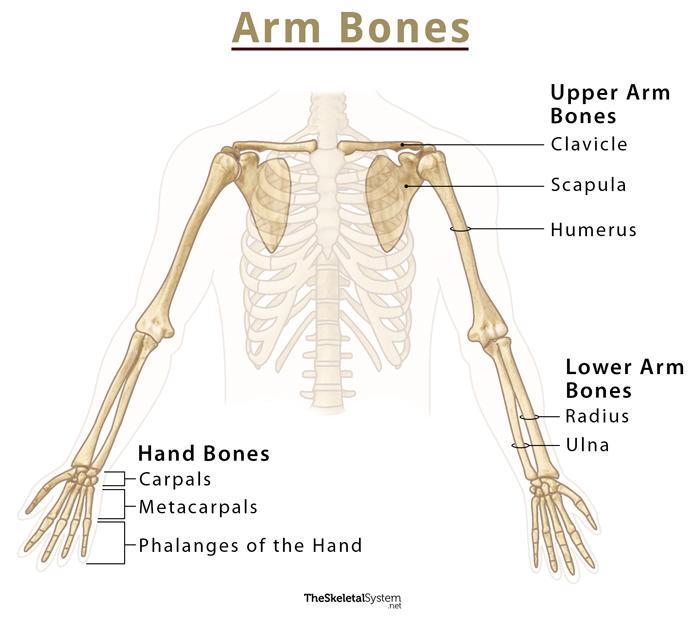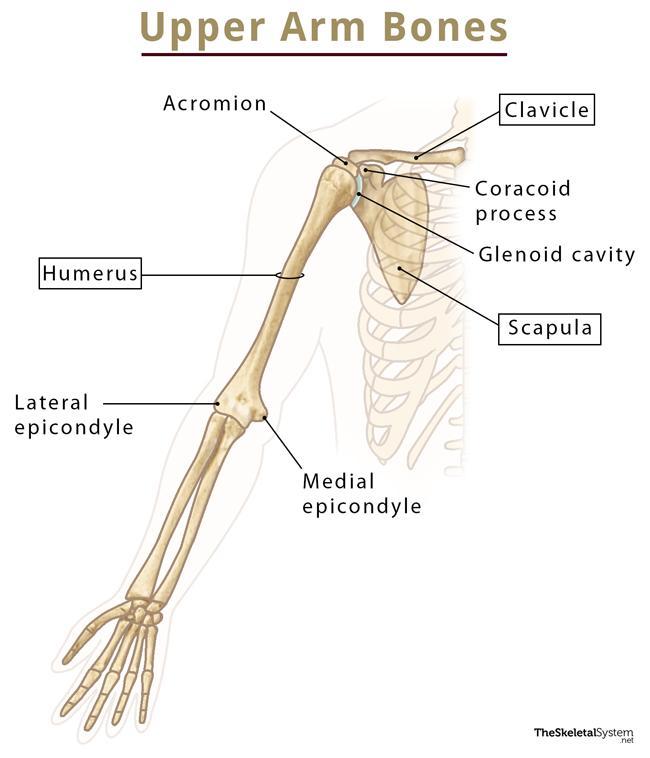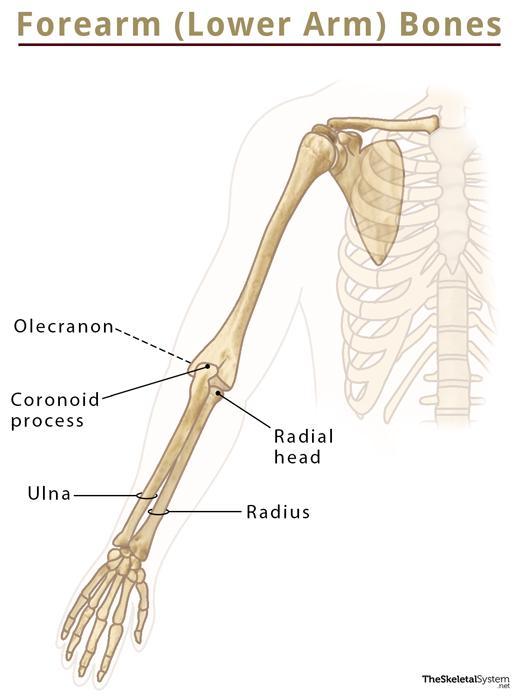Arm Bones
Humans have 32 bones in each arm, with the total being 64. These bones are flexible and strong, supporting and providing structure to the upper limbs and allowing us to use our shoulders, hands, and fingers.
Moreover, they help the arms withstand extreme stress and force during exercise, sports, and during an accident or an emergency like hitting something or falling, when we tend to throw our arms in front.
These bones also have numerous attachment points for various muscles. The joints formed by these bones give our arms the range of motion and dexterity that lets us do all of our daily work, from picking things up, holding them, and things like eating, writing, driving, etc.
Names and Anatomy of All the Bones in the Upper Limb
Upper Arm Bones
These bones form the connection between the arm and the body trunk.
- Humerus (2): It is the uppermost bone in the arm, and one of the longest bones in the human body, running from the shoulder to the elbow. The lateral and medial epicondyles are two important landmarks.
Pectoral Girdle (Shoulder)
It forms the shoulder and allows us to move our hands in all directions. The following two bones join together to form the pectoral girdle:
- Scapula (2): Also known as the shoulder blade, this bone has as many as 17 muscle attachments. The acromion, coracoid process, and glenoid cavity are three crucial landmarks of the scapula.
- Clavicle (2): The connection between the upper arm and chest. It is commonly known as the collarbone.
Lower Arm Bones
There are two long bones in the forearm, and together they connect the upper arm to the wrist and hand through the elbow and wrist joints:
- Ulna (2): It is the longest and overall larger of the two bones, lying on the side of the pinky finger. This bone has two important landmarks, the coronoid process and the olecranon.
- Radius (2): The second lower arm bone that can change its position based on how we flex our arm. It lies on the thumb side of the arm, with the radial head being an important landmark.
Hand Bones
Even though the hands are a small area, 27 bones in each hand form several joints and articulations to allow us to use our hands. Following are the names of the hand bones:
1. Carpals: These are the wrist bones connecting the lower arm to the fingers to form part of the palm:
- Scaphoid bone (2)
- Lunate bone (2)
- Triquetral bone (2)
- Pisiform bone (2)
- Trapezium (2)
- Trapezoid bone (2)
- Capitate bone (2)
- Hamate bone (2)
2. Metacarpals (10): Five long bones at the base of each finger shaping the human hand.
3. Phalanges of the Hand: These are the narrow bones in the fingers. Each finger has three phalanges, except the thumb, which only has the proximal and distal phalanges.
- Proximal phalanges (10)
- Middle phalanges (8)
- Distal phalanges (10)
FAQs
Q. Do your arm bones twist around each other?
Ans. Though it seems that the two lower arm bones, radius, and ulna, would cross during arm movement, they don’t. The radius is the only bone that twists around the ulna, which is locked in its place with a hinge joint. Think of the ulna as a door that cannot rotate because of its hinges.
The only way both lower arm bones would rotate is if you were to rotate your whole arm from the shoulder.
References
- Arm Bones Anatomy, Diagram, and Function – Healthline.com
- Bones of the Arm and Hand – Innerbody.com
- Arm Bones – Mayoclinic.org
- Body Anatomy: Upper Extremity Bones – ASSH.org
- Bones of the Arm and Hand: Anatomy and Functions – Study.com




